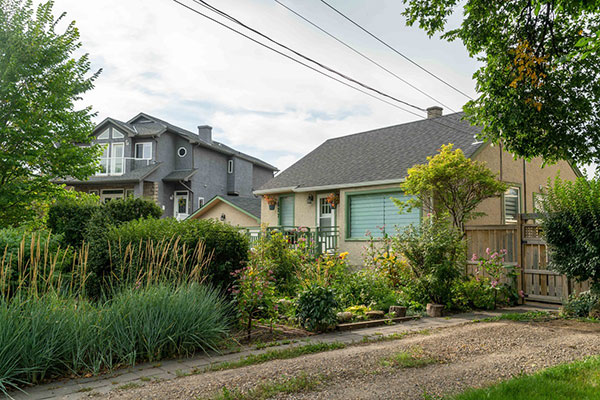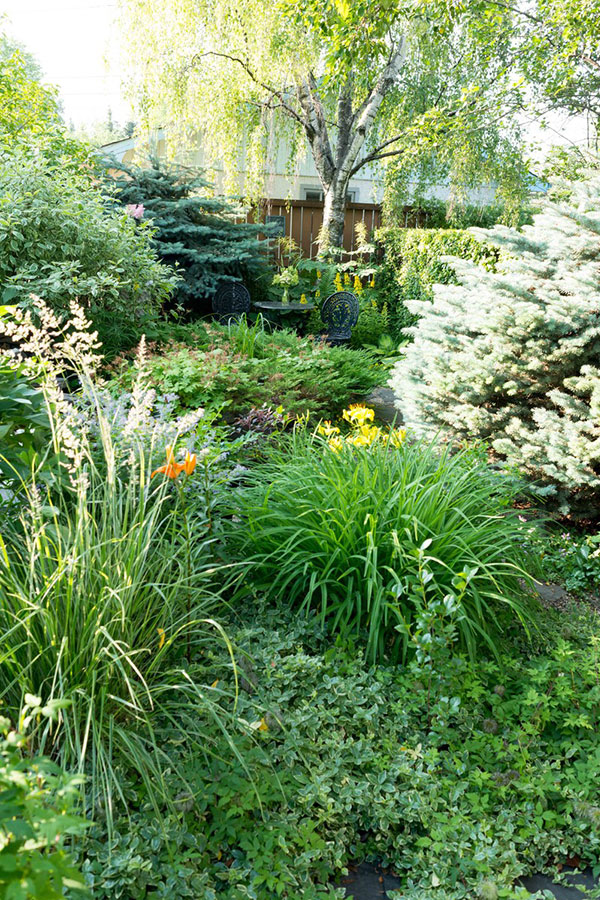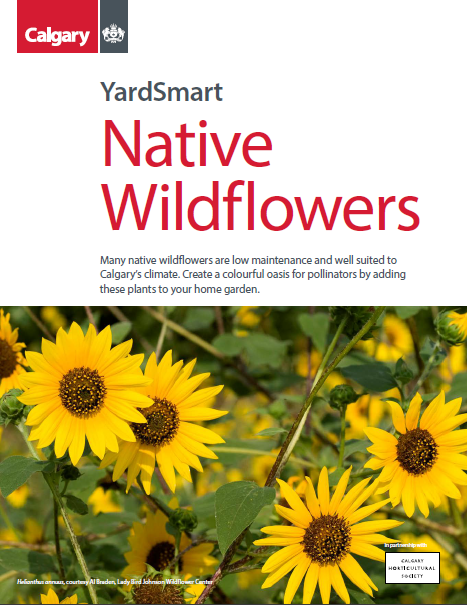Backyard naturalization
Return to Bee a polli-neighbour
Naturalization is a type of habitat restoration. It involves purposefully bringing native plants back to an area so it becomes closer to the natural landscape of the region.
There are environmental, social and economic benefits to habitat restoration. These include:
- Creating landscapes that support plant, animal and insect life.
- Increasing access to nature.
- Providing learning opportunities.
- Reducing maintenance costs (e.g. mowing, fertilizing, applying pesticides and irrigating).
- Adding to curb appeal and potentially increasing the value of your property.
Tips for successful backyard naturalization
Landscape goals
Consider the overall goal of the project and build your yard to achieve your goal (e.g. edible shrubs, increased biodiversity, reduced maintenance, pollinator habitat, enhancement to current design, etc.).
Planning and design
Establish yard borders, understand existing soil requirements, choose the right plants for the climate, plan where to place vegetation and what direction your house faces, use hard and soft landscaping features, etc. Consider asking an accredited landscape company to help sketch and refine your design.
Yard constraints
Use the unique features of your property to your advantage. Consider elements such as: property size, soil type, drainage requirements, sun exposure, existing vegetation, etc. Always contact Utility Safety Partners before starting excavation or planting projects on your property.
Care and maintenance requirements
Naturalization projects can take a few years. In the early stages, weed control, site maintenance and monitoring are essential. Naturalized areas require less maintenance in the long-term, but native plants may take multiple growing seasons to establish. Work is still required to ensure that properties do not fall into a state of non-compliance. Here are some tips to keep in mind:
- Enhanced aesthetics - use a combination of trees, shrubs, groundcover, hard and soft landscaping, and native and non-native plants to improve the appearance of your naturalized yard. Mulch and stone or low-growing cover crops can be used to prevent evaporation, soil erosion, and weed growth, while adding aesthetic value to a yard.
- Turf areas – turf should be mowed and maintained to create a visual distinction between naturalized and non-naturalized areas.
- Noxious and invasive weeds - weeds should be hand-pulled to prevent spread through the roots. Property owners should become knowledgeable about noxious and invasive weeds, as bare soil while plants become established is more susceptible to invasive weed growth.
- Drainage and water conservation - where possible, conserve water by using a rain barrel or by choosing plants that require less water. Plants with high water requirements need specific soil for proper draining and should be planted close together.
Consult local experts and do your research
Unsure about soil structure, planning and design or how to include naturalization in your backyard project? Consult with an expert from your local horticultural group or garden center, or visit your local library for more information.
Remember the bylaws
Property owners must keep grasses and herbaceous plants under 15 cm in height, unless they are in maintained gardens. Property owners must also keep weeds under control and make sure they do not spread to other properties (harmful weeds should be controlled and prohibited harmful weeds should be destroyed). A naturalization project on private property that is MAINTAINED and DISPLAYS PURPOSEFUL DESIGN (borders, edging, etc.) is within City bylaw.
Learn more about naturalization and planning your project:




